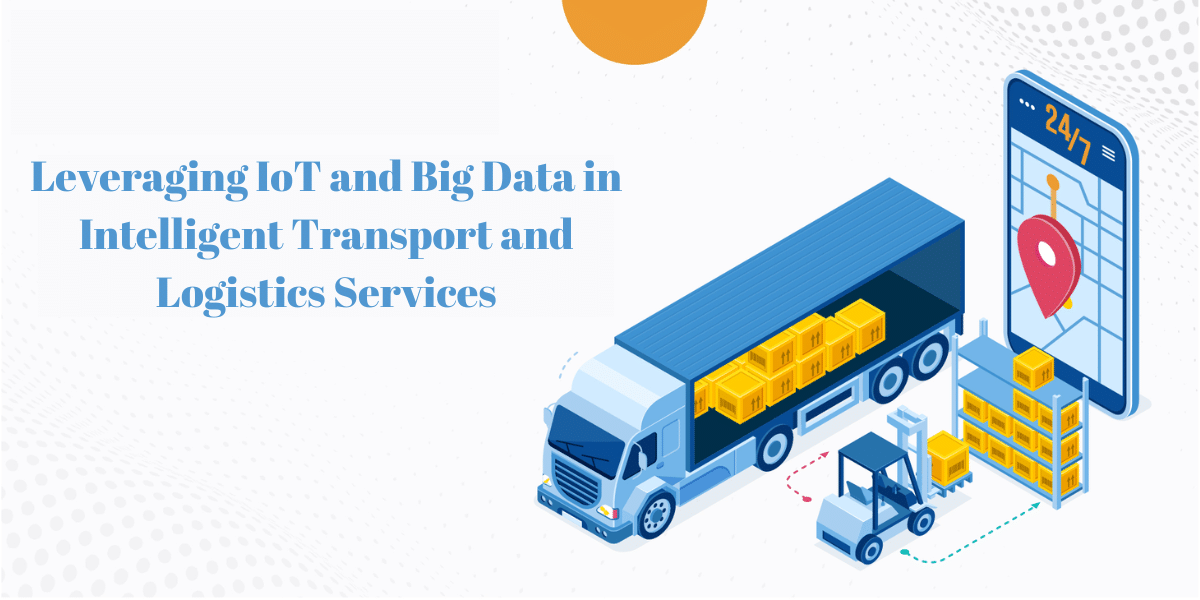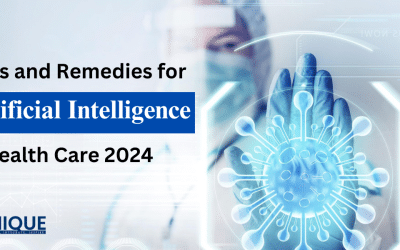The Internet of Things (IoT) and Big Data analytics have transformed logistics and transportation services by ushering in an age of data-driven operations. Fleet managers can now collect massive amounts of real-time information on infrastructure, vehicles, and supply chains—with IoT devices monitoring vehicle performance for tracking deliveries or optimizing routes in previously impossible ways—providing invaluable insight for decision-making and optimization processes.
Big Data analytics further enrich this ecosystem by mining collected information to uncover patterns, trends, and anomalies – providing opportunities for preventative maintenance services, efficient resource allocation decisions, and enhanced customer experiences.
IoT/Big Data technologies enable the design of intelligent transportation networks, which improve transportation management, decrease congestion, and promote sustainability. This article investigates how IoT/Big Data transforms transport and logistics systems into intelligent, responsive systems.
Enriching Fleet Management by using IoT Sensors
Fleet management is an essential element of effective logistics and transportation operations. IoT sensors play an essential function in maximizing fleet performance, safety, and cost-efficiency. When integrated into assets and vehicles, these sensors can collect an abundance of information on different parameters like the vehicle’s location, speed of travel, energy consumption, and engine health. They also track drivers’ behavior.
The real-time monitoring capabilities offered by IoT sensors permit fleet managers to monitor vehicles’ locations, assuring prompt departures and arrivals. Furthermore, by studying data about fuel consumption and engine diagnostics, companies can pinpoint inefficiencies and then implement strategies to boost fuel efficiency, decrease emissions, and prolong the life of their vehicles.
IoT sensors can also improve security by providing insight into the behavior of drivers including abrupt braking, acceleration and turning. By analyzing these indicators fleet managers can spot risky behaviors and develop programmes to educate drivers on safer driving, thereby lessening the chance of accidents as well as the costs associated with them.
Additionally, IoT sensors facilitate proactive maintenance by observing the health of vehicles in real-time, and identifying possible issues before they turn and cause costly repairs. Predictive maintenance strategies, which are enabled through IoT analysis of data, can help businesses reduce downtime, enhance maintenance schedules, and increase the lifespan for fleet equipment.
In the end using IoT sensors in fleet management systems allows businesses to increase control, efficiency as well as greater control over transport assets. With the help of real-time data insight companies can make informed decisions based on data, which improve operational efficiency and give them an advantage in the ever-changing environment of logistics and transportation.
Enhancing Route Planning using Big Data Analytics
A well-planned route is crucial to reduce the cost of transportation and reducing delivery times and maximising the utilization of resources for logistics operations. Big Data analytics plays an essential part in maximizing route planning by studying various variables like traffic patterns and road closures, weather conditions as well as historical data regarding delivery routes.
Utilizing Big Data analytics tools, logistics firms can create transport and logistics software solutions that adjust according to changing conditions. The algorithms take into account a variety of factors, such as congestion on the roads, capacity of vehicles delivery times, and fuel efficiency to determine which routes are most effective for every shipment.
Furthermore, Big Data analytics enables pre-planned route planning, by identifying patterns and trends in the historical data. By studying past delivery performance and patterns of demand from customers companies can predict the future requirements and then proactively improve routes to satisfy customer demands and service levels.
In addition, route optimization aided through Big Data analytics enhances overall efficiency of supply chains by reducing empty miles, decreasing the consumption of fuel and carbon emissions. By identifying those routes that are most effective businesses can make savings while reducing their carbon footprint.
In a nutshell, Big Data analytics revolutionizes the process of planning routes in logistics and transport by giving organizations the means to optimize routes automatically, efficiently, predictably, and sustainably. Utilizing analytics based on data, businesses can streamline their processes and improve customer satisfaction and get an edge on the market.
Real-time Monitoring of Vehicle Performance and Condition
Monitoring of vehicle performance in real-time and health is crucial to guaranteeing the security, reliability, and effectiveness of transportation operations. IoT sensors in vehicles collect data on a variety of parameters like temperatures of the engine, levels of fuel in the tire, tire pressure, and speed of the vehicle, giving insight into the condition and health that the automobile is in.
Monitoring the vehicle’s performance continuously in real-time, companies can spot potential problems before they become costly accidents or breakdowns. For instance, any abnormality in the engine’s temperature or pressure of oil could signal imminent mechanical failures, prompting proactive maintenance actions to avoid unexpected breakdowns.
In addition, real-time monitoring permits companies to improve the performance of vehicles and improve fuel efficiency by identifying potential opportunities for driver education and behavior modification. By giving drivers feedback regarding their driving habits like excessive idle or excessive acceleration, businesses can encourage safer and efficient driving habits, which lead to savings in costs and a reduction in environmental impact.
Additionally, real-time monitoring aids monitoring of fleets and asset management and allows organizations to track the location and condition of their fleet at any time. This improves the visibility and control of operations, allowing organizations to respond quickly to any unexpected event or deviation from their planned routes.
All in all, real-time monitoring of the vehicle’s performance and condition, which is made possible through IoT sensors, improves the safety, reliability and efficiency of transportation. Through the use of real-time data insights businesses can take proactive control of their fleets, limit the time they are down, and provide top-quality service to their customers.
Enhancing Supply Chain Visibility using IoT Devices
Visibility of supply chains is essential to ensure smooth operations, timely delivery and prompt customer services in logistics and transportation. IoT devices play an essential part in enhancing supply chain visibility through real-time monitoring and tracking of goods as they travel throughout the supply chain.
IoT-enabled tracking equipment, like GPS tracking devices and RFID tags, enable organizations to keep track of conditions, location and condition of the shipments at all stages of the chain of supply. By collecting information on variables like humidity, temperature and vibration, companies can guarantee the quality and integrity of their goods during the entire transportation process.
Additionally, IoT devices enable organizations to predict and reduce disruptions to the supply chain through immediate notifications and alerts. For instance in the event that a shipment gets delayed or diverges from the route it was intended to travel, IoT sensors can alert those involved immediately and enable them to make corrective actions and limit the impact to operations.
Furthermore, IoT devices facilitate inventory management as well as forecasting demand through real-time data about consumption patterns, stock levels and demand from customers. Through the analysis of this information, businesses can improve their inventory levels as well as reduce stockouts and boost the overall efficiency of supply chains.
Additionally, IoT devices enable organizations to monitor and trace products from manufacturing to customer, which increases transparency and accountability across the entire supply chain. This feature is particularly useful in sectors such as food and pharmaceuticals which have strict quality standards and regulations have to be met.
In sum, AI transport and logistics solutions play an essential role in enhancing supply chain visibility through providing real-time tracking, monitoring and information about the flow of products. Utilizing IoT technology, businesses can improve efficiency in their operations as well as minimize disruptions and offer superior service to their customers.
Enhancing the Warehouse Operation by IoT-enabled Solutions
Warehousing is a crucial element in the supply chain ecosystem. It serves as a central point to store, sorting and distribution of products. IoT-enabled products offer a variety of possibilities to improve warehouse operations, enhancing efficiency as well as accuracy and throughput.
One major use of IoT within warehouses concerns the management of inventory. IoT sensors as well as RFID tags can be utilized to monitor the status and location for inventory products in real time which allows organizations to keep precise inventory records and reduce the risk of stockouts and overstock situations. Automated inventory tracking streamlines the picking, packing and replenishment processes, thus reducing the chance of errors and costs for labor.
IoT devices are also able to monitor conditions in warehouses such as humidity, temperature and the ambient lighting levels. This monitoring in real time ensures that products are stored in the best conditions possible, which will preserve their quality and shelf-life. Additionally, IoT sensors can detect the presence of environmental conditions and alert warehouse workers to any potential problems before they affect the quality of products or security.
In addition, IoT-enabled systems facilitate monitoring and tracking of assets in the warehouse. Through the use of tags on equipment and assets using IoT sensors, businesses can track their location and use, improve the allocation of resources, and schedule maintenance tasks in advance. This increases the efficiency of asset utilization and decreases the chance of equipment failure.
Furthermore, IoT technologies can enhance security and safety in warehouses. Video surveillance cameras with IoT capabilities are able to monitor in real-time critical areas, thereby alerting employees to possible security risks or breach. Access control systems that are integrated with IoT sensors also limit the access of unauthorized people to areas, securing the valuable inventory and assets.
In the end, IoT-enabled products provide significant opportunities to improve warehouse operations by enhancing the management of inventory, observing the environmental conditions, maximizing utilization of equipment, and increasing security and safety. Through the use of IoT technology, companies can streamline their warehouse processes, lower costs, and offer superior customer service to their customers.
Predictive Maintenance for Vehicles and Infrastructure
The concept of predictive maintenance is a proactive method of maintenance management that uses data analytics to anticipate equipment failures prior to their occurrence thus reducing downtime and improving maintenance schedules. In the logistics and transportation industry the predictive maintenance approach is crucial to ensure the safety and reliability of infrastructure and vehicles.
IoT sensors in the infrastructure of vehicles and other components gather a variety of data on various parameters like temperature and pressure, vibration and patterns of usage. The data is then analysed by using advanced analytics methods to find patterns, trends and irregularities that could signal imminent failures of equipment.
Monitoring the performance and health of infrastructure and vehicles in real-time, companies are able to spot issues before they become serious and take proactive steps to fix the issues before they turn into expensive breakdowns or accidents. For instance, unusual measurements of engine temperature or vibration levels could indicate imminent mechanical failures which prompt maintenance actions to minimize downtime and assure continuous operation.
Furthermore, predictive maintenance allows companies to improve maintenance schedules and allocate resources by prioritizing maintenance work according to the probability and severity of failures that could occur. By focusing resources on the most critical equipment and components, businesses can increase uptime, reduce the cost of maintenance, and also extend the lifespan of equipment.
Additionally, predictive maintenance can increase security by identifying dangers to safety prior to posing a danger to employees or the general public. By replacing parts that are damaged or worn out organisations can lower the risk of accidents and enhance the overall performance of safety.
In short Predictive maintenance for infrastructure and vehicles that are powered through IoT sensors as well as data analysis, can provide substantial benefits in terms of decreasing downtime, enhancing maintenance schedules and improving security. By implementing an approach that is proactive to maintenance management, companies can boost efficiency and operational efficiency as well as reduce costs and provide superior customer service.
Implementing Smart Traffic Management Systems
Congestion in traffic is a major issue faced by cities around the world, which results in the loss of time, energy and productivity and also a rise in pollution and emissions. Intelligent traffic management systems make use of IoT technologies and analytics on data to improve the flow of traffic, decrease traffic congestion, and boost overall efficiency in transportation.
IoT sensors that are installed at crucial places, like highways, intersections, and parking areas, collect real-time information about the traffic volume, speed of vehicles and the level of congestion. This data is then processed with advanced analytics techniques to detect patterns in traffic and hotspots of congestion, and optimize the timing of traffic signals in real-time.
One of the most important applications of intelligent technology for traffic control is adaptive traffic signal control. In this, traffic signals alter their timings based on actual traffic conditions. By focusing the flow of traffic along congested routes and intersections, adaptable signal management systems cut down on delays and speed up travel for motorists.
Furthermore, intelligent traffic management systems provide the use of dynamic route guidance and optimization for drivers, enabling them to avoid areas of congestion and identify optimal routes for get there. With real-time traffic updates and alternative route suggestions these systems can cut down the time to travel as well as fuel consumption emissions while increasing overall satisfaction.
In addition, advanced traffic management systems allow authorities to use price strategies that are responsive to demand, like congestion pricing, or tolling, in order to control traffic congestion and ease congestion during peak times. Incentivizing alternative methods of transportation, or travel times the pricing strategies decrease traffic volume and enhance overall flow of traffic.
In short, the implementation of intelligent traffic management systems provides huge benefits in terms of decreasing congestion, improving the flow of traffic, and increasing the overall efficiency of transportation. Utilizing IoT technologies and analytics on data, officials are able to make informed decisions that optimize traffic management and enhance the living conditions for residents living in urban areas.
Enhancing the Customer Experience by data-driven logistics
In today’s highly competitive marketplace providing exceptional customer service is a must for businesses within the logistics and transportation sector. Data-driven logistics, aided through IoT as well as Big Data Analytics, provides many opportunities to improve the customer experience through more transparency, visibility, and a more responsive supply chain.
One of the ways that data-driven logistics can improve the customer experience is by offering live tracking and monitoring of the shipments. IoT-enabled tracking devices enable customers to keep track of the progress and location of their orders right from the time they are shipped until the moment they are delivered, giving them security and clarity throughout the process of delivery.
Additionally, data-driven logistics solutions allow companies to customize and improve the customer experience when they deliver. By studying historical data about the preferences of customers as well as delivery patterns and service levels, businesses can customize delivery options like delivery times as well as routing preferences and delivery instructions to suit the individual needs of each customer and their preferences.
Additionally, data-driven logistics facilitates prompt communication and resolution of issues with customers. With the help of real-time data insight businesses can identify and resolve potential issues such as disruptions, delays or discrepancies in order before they affect the customer experience. Rapid communication and prompt resolution of issues show trustworthiness, reliability, and dedication to customer satisfaction.
Additionally, data-driven logistics permits companies to collect feedback and data from their customers to continually improve their services. By studying the sentiment of customers and feedback companies can pinpoint areas to improve, refine their processes, as well as develop new services that better meet the requirements of customers and expectations.
In conclusion, improving the customer experience by leveraging data-driven logistics can bring huge benefits in terms of satisfaction, loyalty and retention. Utilizing IoT along with Big Data analytics, organizations can offer customized, responsive and transparent customer service that are a delight to customers as well as differentiate their business in the market.
Leveraging IoT for Last-Mile Delivery Efficiency
The delivery last mile is usually the most complicated and costly part within the supply chain, and presents many challenges, including congestion, delivery windows and the requirement to ensure precise delivery timing. IoT technologies can provide new solutions to improve last-mile delivery efficiency, cutting costs and increasing customer satisfaction.
One major benefit that comes with IoT for last mile delivery includes the ability to track in real-time and monitoring of deliveries. IoT-enabled tracking devices mounted on delivery vehicles offer customers and logistics providers with real-time information on the situation and whereabouts of their deliveries, improving transparency and visibility all through the process of delivery.
Furthermore, IoT sensors can monitor environmental conditions like temperature as well as humidity, and temperature.
levels, and even vibrations in transit, assuring the quality and integrity of delicate goods like food items, pharmaceuticals or perishable items. With real-time alerts when a deviation occurs from pre-set levels, IoT sensors help prevent loss or damage, thus increasing the overall reliability of delivery and ensuring customer satisfaction.
Additionally, IoT technologies enable dynamic routing and scheduling of delivery vehicles in real-time based on traffic conditions, delivery volume and customer preferences. Advanced algorithms analyse data gathered from IoT sensors, GPS devices, as well as traffic database databases, to improve delivery routes and reduce travel time, and guarantee prompt delivery even in the event of unplanned delays.
In addition, IoT-enabled solutions allow efficient utilization of assets and resource allocation for delivery operations in the last mile. By monitoring the performance of the vehicle in terms of fuel consumption, vehicle performance, and driver behaviour in real-time, companies are able to identify opportunities to improve efficiency, decrease operating expenses and boost the productivity that their vehicles provide.
Furthermore, IoT technologies enable the deployment of novel delivery strategies like drone delivery and autonomous vehicles. Utilizing IoT sensor technology and the internet of things, companies can remotely monitor and control autonomous, unmanned aerial vehicles as well as self-driving cars, which allows quicker, more flexible and economical delivery options especially in urban or in remote areas.
Ensuring Cargo Security by Enabling IoT-enabled Tracking
Cargo security is an essential concern for the transport and logistics sector and the risk of theft, tampering and loss, posing a significant risk for both cargo owners as well as logisticians. IoT-enabled tracking solutions can offer new methods to improve security of cargo by giving real-time visibility, monitoring and control of all shipments in all stages of the distribution chain.
IoT-enabled tracking devices like GPS tracking devices and RFID tags, permit organisations to monitor the movement, location, and state of cargo while in transportation. These devices send real-time data to central systems, allowing those involved to track the location of their cargo and get alerts in the event of unintentional changes or disruptions.
Furthermore, IoT sensors can monitor environmental conditions, such as temperature as well as humidity and light exposure, which ensures the safety and security of high-value or sensitive cargo. In real-time, they can alert you when a deviation occurs from the preset thresholds IoT sensors can to prevent damage, spoilage or theft, increasing the security of cargo and reducing the financial loss.
Additionally, IoT-enabled tracking solutions help in proactive risk management and intervention in the event of security risks. Through the analysis of data on past transportation routings, deliveries patterns as well as risk-related factors businesses are able to identify vulnerabilities and take preventive steps to reduce security risks, for example, rerouting delivery routes or hiring more security staff.
Furthermore, IoT technologies enable organizations to establish geofencing and Tamper detection systems to protect the cargo from unauthorized access or altering. Geofencing technology makes virtual boundaries around defined zones, and triggers alerts when shipping containers diverge from their planned routes. Tamper detection sensors identify any attempt to open the container without authorization or alter cargo containers and provide immediate alerts for security staff.
In a nutshell, IoT-enabled tracker solutions provide effective tools for ensuring cargo security in the transportation and logistics sector. With immediate visibility, monitoring and control over the shipments companies can reduce security risks, reduce losses, and protect the security of the supply chains they operate.
Reduced Environmental Impact by Data-Driven Logistics
Environmental sustainability is an increasing issue in the transportation and logistics solutions, as there is growing pressure to cut carbon emissions, cut down on the use of fuel, and reduce the environmental impact of transport operations. Logistics solutions that are driven by data and powered by IoT or Big Data analytics offer innovative methods to meet the environmental sustainability targets while maintaining the efficiency of operations and competitiveness.
One of the most important aspects to reduce environmental impacts is maximizing transportation routes and modes in order to minimize emissions and consumption of fuel. Through analyzing the patterns of traffic, efficiency of vehicles and other alternative transport choices, businesses can pinpoint ways to reduce the number of shipments they transport and use more efficient vehicles, or change to environmentally friendly modes of transport like maritime or rail shipping.
Additionally, IoT sensors and telematics devices allow continuous monitoring of the performance of vehicles, their emissions and consumption of fuel which allows organizations to spot inefficiencies and develop strategies to improve. Through optimizing driving behavior and maintenance schedules as well as routing, companies can cut down on emission levels, cut down on fuel consumption and reduce their environmental footprint.
Additionally, the use of data-driven logistics solutions allow companies to improve the management of inventory and distribution processes in order to reduce the amount of waste generated and reduce environmental impact. Through the analysis of data about trends in demand along with inventory levels, as well as the metrics of fulfillment, companies can streamline their supply chain operations and decrease inventory overflow and reduce the requirement to rush or expedite delivery, thus reducing the emissions from transport.
Furthermore, solutions for data-driven logistics aid in the implementation of sustainable practices like the reverse logistics process and the reduction of waste. By studying data on recycle opportunities, product returns and waste disposal procedures businesses can optimize reverse logistics processes, reduce the waste generated by landfills, and increase the recycling and reuse of their materials.
In short, data-driven logistics solutions provide powerful tools for cutting down on environmental impacts in the logistics and transport sector. Through the use of IoT as well as Big Data analytics, organizations are able to meet environmental sustainability goals while ensuring efficiency in operations, cutting expenses, and increasing their image as corporate citizens with a conscience.
The Key Takeaway
In the end, using IoT along with Big Data analytics in the logistics and transport solutions marks an exciting shift towards better, more efficient as well as sustainable operation. Through the use of IoT gadgets and sensors businesses can have real-time access to information monitoring and control over different aspects of logistics and transportation including fleet management, to delivery last mile.
Big Data analytics complements IoT by analysing huge amounts of data in order to discover useful information, optimize routes and boost the process of making decisions. These technologies enable companies to increase efficiency, cut expenses, increase satisfaction of customers, and minimize risk. Furthermore, IoT and Big Data allow proactive measures, such as the use of predictive maintenance to optimize routes as well as environmental sustainability initiatives which will boost long-term competitiveness and resiliency in the constantly changing world of logistics and transport.
As the business continues to grow and evolve, the strategic use of IoT as well as Big Data will be essential for companies that want to succeed in the increasingly complex connected world of logistics and transportation.











